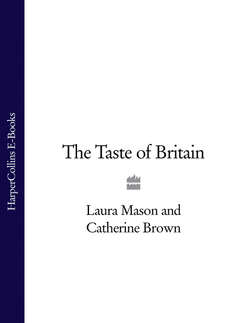Читать книгу The Taste of Britain - Hugh Fearnley-Whittingstall - Страница 166
HISTORY:
ОглавлениеThese tarts were also known (more accurately perhaps) as pies. They are distinctive in their use of hot-water pastry, usually associated with savoury pies, in combination with sweet filling. See also Cumnock tarts, below. Gooseberries are the common filling, but black currants are also known. A very similar gooseberry pie was made for Mansfield Fair in Nottinghamshire. No other fruit pies using this type of pastry are mentioned by authorities on British food.
Both the Oldbury and Mansfield pies were noted at the end of the last century. The Nottinghamshire affairs involved melted apple jelly being poured into the warm pies to set as it cooled. This is just like adding jellied stock to savoury pork pies. White (1932) records that the pies were still being sold at Mansfield Fair. Surviving recipes for Oldbury tarts are of more recent date, but the use of brown sugar as a sweetener suggests a tradition stretching well into the nineteenth century before white sugar became cheap and easily available (about 1840). Pauline Gazard, one of the few people who now keeps the dish alive, quotes oral traditions to do with the pies. They should be eaten from the hand, and a good pie is full of juice which runs out when bitten. The pastry should be thin, and the decorative edge is important; there should be 21 points to the crown. They are more difficult to make than ordinary pies, which discourages many. This most interesting tradition appears to be declining. They are still available in small numbers at local fetes and fairs in July.
